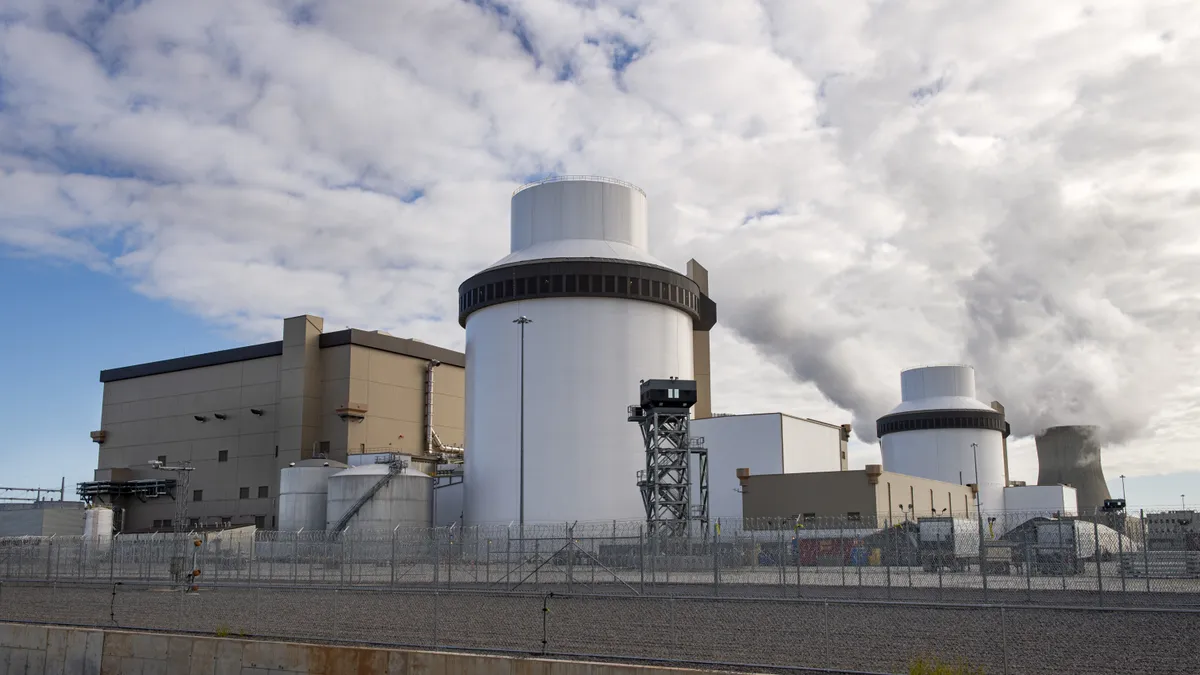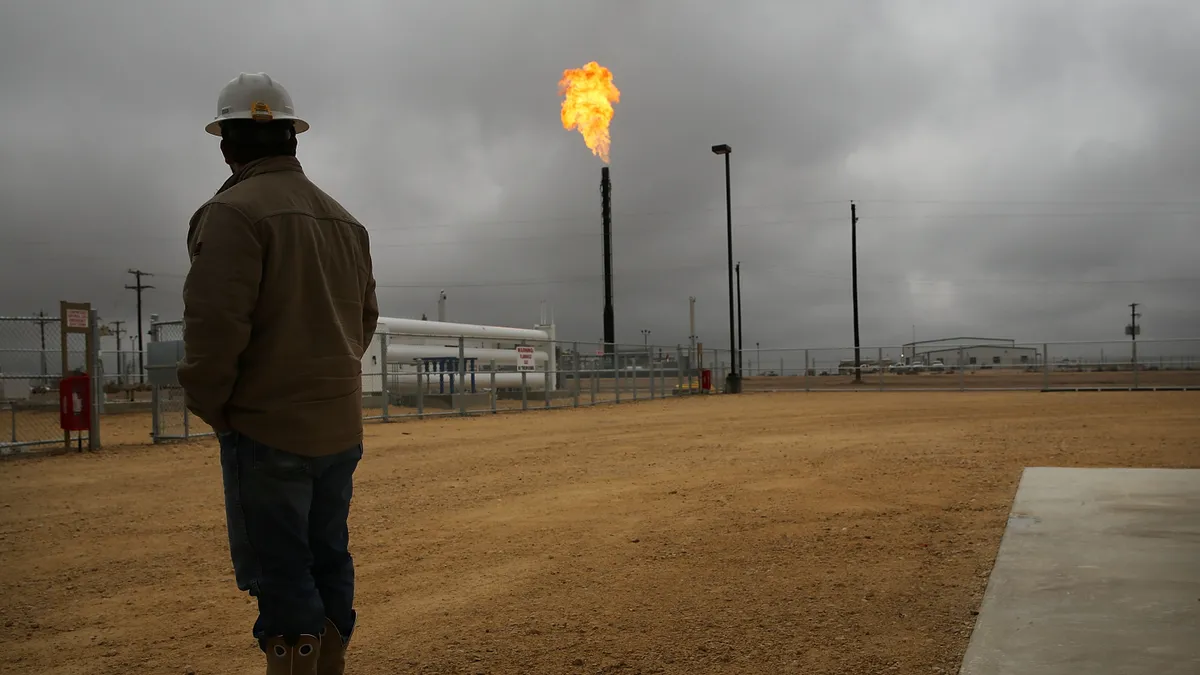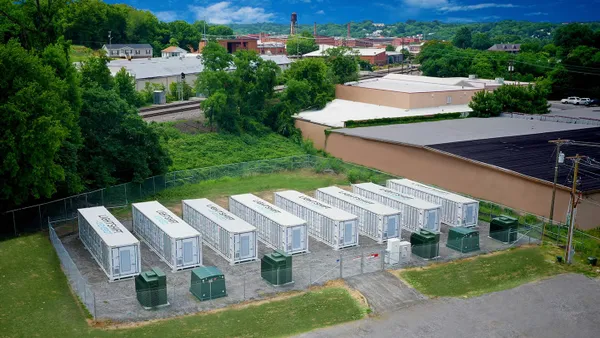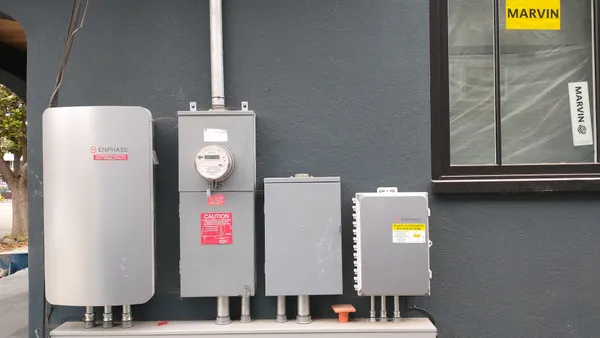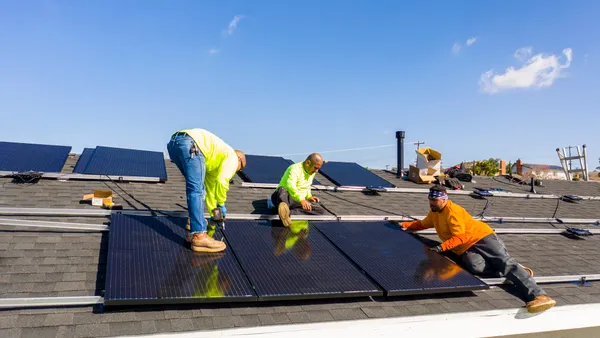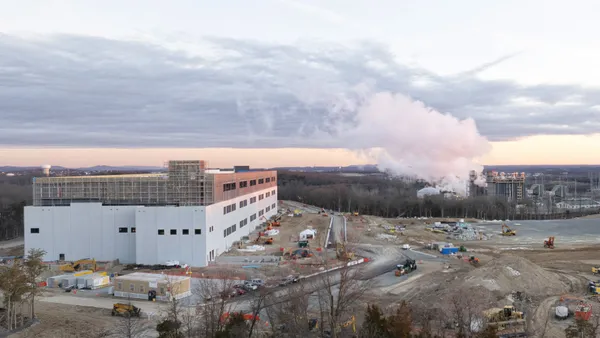Dive Brief:
-
AES Corporation's Alamitos battery energy storage system, a 400 MWh standalone storage facility that came online in Southern California Edison's (SCE) footprint last month, will play a role in bolstering grid reliability during the coming summer months, according to SCE President and CEO Kevin Payne.
-
The project, one of the largest battery storage systems operational in the world today, is an important contributor to achieving the 30 GW of utility-scale storage that SCE estimates will be required for California's clean energy goals, Payne said at a virtual event Wednesday. "More immediately, this facility will also help meet capacity needs for this summer," he added.
- California regulators have been focused on ensuring grid reliability in summer 2021 after a record-breaking heatwave prompted the California Independent System Operator (CAISO) to initiate rolling blackouts last August. Last week, regulators passed a decision instructing utilities to procure additional capacity — including energy storage — to prevent blackouts this year.
Dive Insight:
Following last August's rolling blackouts, California's energy agencies prepared a report identifying ways to prevent reliability issues from recurring, including updating reliability planning targets to reflect extreme weather conditions and the changing mix of resources in the state, as well as bringing additional resources online by summer 2021.
The CPUC's recent decision asked utilities to look into four kinds of resources: energy storage capacity, firm forward imported energy, additional capacity from existing power plants or contracting generation at risk of retirement. Environmental advocates, however, have pushed for prioritizing renewables and storage capacity, as well as demand-side resources.
SCE signed a 20-year power purchase agreement for the project in 2014, as part of a broader $2 billion effort to switch out natural gas peakers in Long Beach with battery storage and efficient combined-cycle gas capacity. The Alamitos project was the first large-scale battery energy storage project to receive a long-term PPA, Leonardo Moreno, president of AES Clean Energy, said at the event Wednesday, adding, "it helped define the market for storage."
The 2014 contract signified an important shift in California towards meeting reliability needs with clean energy resources, Payne said.
"[T]he timeliness of it coming online now helps us become better prepared for this summer and many more summers to come. As we move to decarbonize the grid and more gas units retire, this and other storage facilities like it will play an important role in maintaining a safe, clean and reliable grid," he added.
As California continues to decarbonize its grid, the state is likely to see a lot more storage coming online. Currently, CAISO's system only has about 550 MW of storage, Angelina Galiteva, a member of CAISO's Board of Governors, said at the event. But by August or September of 2021, the system operator expects to see a total of 1750 MW online.
Additional storage resources could play a critical role in meeting demand during the evening ramp, after solar powers down. Currently, the evening ramp is around 15,000 MW for four hours every day, Galiteva said. But by 2030, as California continues to decarbonize its economy, that likely will have increased to 30,000 MW.
"So we need 30,000 MW of flexible capacity every single day for four hours — lots of opportunities for development for storage and for batteries," Galiteva said.





